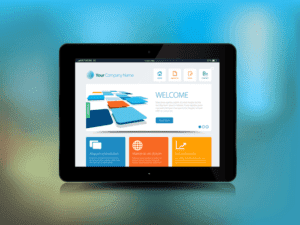Moreover, this analysis technique determines a company’s break-even point. The primary purpose of CVP analysis is to provide insight into how changes in product price, sales volume, and variable costs will impact profitability. In summary, the contribution margin is the amount of revenue left over after variable costs have been deducted from the sales price of a product. It is an important concept in Cost-Volume-Profit (CVP) analysis and can help businesses make informed decisions about pricing, product mix, and resource allocation. By analyzing variable costs in CVP analysis, businesses can make informed decisions about pricing, product mix, and resource allocation. For example, the company could use CVP analysis to determine the impact of a price increase on its profits or to decide whether to produce and sell a new product line.
The cost of a product is, for instance, influenced by factors such as cost of inputs, volume, size of plant, efficiency of production, product- mix, etc. On the other hand, if your variable costs are high, your pricing flexibility is constrained by the need to maintain a healthy contribution margin. High variable costs leave less room for profit per unit sold, meaning that price adjustments need to be more precise in order to avoid losing money on each unit. Businesses often need to adjust their pricing strategies to ensure they are covering costs and generating profit.
Does not consider non-financial factors – The Disadvantages of Cost-Volume-Profit Analysis
The contribution margin can be calculated by subtracting the total variable costs of production from total sales. Only a limited amount of information can be presented in a single break-even chart. The effect of changes of fixed costs and variable costs at different levels of production on profits can be demonstrated by the graph legibly. what is the difference between adjusting entries and correcting entries Effect of changes in sales price also can be quickly grasped by the management by having a look at the break-even chart.
Video Illustration 4-1: Discussion of CVP and the contribution margin income statement LOs1,2
Quickly connect your data sources and set up automatic updates to ensure updated data for your whole team. Financial analyses tend to require input from multiple sources, often in different formats, and need to be repeated regularly. Moreover, the results of many calculations are then used in other analyses, excel bookkeeping and bookkeeping services making data management and data synchronization key issues. In this comprehensive guide, we’ll explore the concepts, applications, and best practices of CVP analysis to equip you with the insights you need for strategic planning. With a career spanning over a decade in the fintech industry, she leverages her expertise to drive strategic product marketing in the finance and FP&A tech space. Connect and map data from your tech stack, including your ERP, CRM, HRIS, business intelligence, and more.
Contribution Margin Equation Approach
Through CVP analysis, businesses can evaluate the contribution margins of each product and allocate their resources accordingly, focusing on products with higher contribution margins. Cost-volume-profit (CVP) analysis is an essential tool in managerial accounting used to determine a company’s breakeven point and profitability. However, common misconceptions about CVP often lead to misconstrued results, which could ultimately affect business decisions. CVP analysis provides organizations with a framework to measure and evaluate their financial performance. To identify patterns and trends, managers can track sales volume, costs, and profitability over time.
- This limitation can result in inaccurate calculations if these costs are not appropriately accounted for.
- Lastly, organizations can use technology to simplify CVP analysis processes.
- More specifically, the number 5 means that a 1% change in sales will cause a magnified 5% change in net income.
- Fixed costs remain constant regardless of the volume of sales or production.
- A contribution margin income statement follows a similar concept but uses a different format by separating fixed and variable costs.
- The contribution margin can be calculated to get a total dollar amount or an amount per unit.
Business Mgt
The capacity can be utilised to the fullest possible extent and economies of scales and capacity utilisation can be affected. The efficiency of output in plant is indicated by the angle of incidence formed at the intersection of the variable cost line and the sales line. CVP analysis includes the entire gamut of profit planning, while break-even analysis is one of the techniques used in this process. However, the technique of break-even analysis is so popular for studying CVP Analysis that the two terms are used interchangeably.
- With CVP Analysis information, the management can better understand the overall performance and determine what units it should sell to break even or to reach a certain level of profit.
- In addition, it can help them identify industry trends and patterns, set and monitor performance targets against benchmarks, and identify opportunities for further growth.
- The benefit of CVP analysis is that it highlights the key factors that affect profits and enables the company to understand the implications of changes in sales volume, costs or prices.
- Essentially, the contribution margin tells you how much money is left to cover your fixed costs and generate profit.
- Moreover, the results of many calculations are then used in other analyses, making data management and data synchronization key issues.
CVP simplifies the computation of breakeven in break-even analysis, and more generally allows simple computation of target income sales. It simplifies analysis of short run trade-offs in operational decisions. Follow the instructions to calculate the total contribution margin and the contribution margin per unit. Another error that can occur is the failure to consider the timing of expenses. The cost incurred on an individual product unit may vary depending on whether it is manufactured early or late in the production cycle. Inaccurate timing calculations can result in overestimating or underestimating the profit margin.
Whether you’re planning for can my landlord ask me to prepay rent the next quarter or the upcoming year, CVP can help you set realistic sales targets and understand how much you need to sell to achieve specific profit levels. Understanding the contribution margin is vital because it helps businesses assess how many units they need to sell to cover their fixed costs and start making a profit. The higher the contribution margin, the fewer units you need to sell to cover your expenses and achieve profitability.
What is a Cost Volume Profit Analysis?
The contribution margin can be calculated to get a total dollar amount or an amount per unit. To get a total dollar amount, subtract the total variable costs from the total sales amount. It represents the amount of income that is available to cover fixed costs and generate profits.
Businesses use CVP analysis to determine the optimum price of their products and services. The analysis considers the costs incurred during production and the profit margins desired by the company. This enables businesses to set prices that ensure profitability while remaining competitive. CVP analysis is only reliable if costs are fixed within a specified production level. All units produced are assumed to be sold, and all fixed costs must be stable in CVP analysis. The unit contribution margin is simply the remainder after the unit variable cost is subtracted from the unit sales price.
By examining how small changes in these variables affect profitability, you can make more informed decisions about where to focus your efforts. The benefit of CVP analysis is that it highlights the key factors that affect profits and enables the company to understand the implications of changes in sales volume, costs or prices. This knowledge of cost behaviour patterns and profit volume relationships provides insights which are valuable in planning and controlling short-run and long-run operations. A critical part of CVP analysis is the point where total revenues equal total costs (both fixed and variable costs). This break-even point can be an initial examination that precedes a more detailed CVP analysis.
Cost-Volume-Profit (CVP) analysis revolves around several key components that interact to determine the profitability and break-even point of your business. Each of these components provides crucial insights into how your costs, sales prices, and volume of sales affect your bottom line. One can think of contribution as “the marginal contribution of a unit to the profit”, or “contribution towards offsetting fixed costs”. CVP analysis is a valuable tool for businesses to prepare budgets and forecasts. This analysis enables companies to project their future costs, profits, and sales volume accurately. This is essential for making informed investment decisions, expansion plans, and pricing strategies.
Until you reach this point, all the revenue you earn goes toward covering your fixed and variable costs. Once you pass the break-even point, any additional sales contribute directly to your profit. This means that for every dollar in sales, 60 cents goes toward covering fixed costs and contributing to profit. A higher contribution margin ratio indicates a more efficient product that generates a greater return for every sale, which is critical for businesses aiming to maximize profitability. Fixed costs are the expenses that do not change regardless of how much or how little you produce or sell. These are costs that you incur on a regular basis, and they remain constant in the short term.
These are simplifying, largely linearizing assumptions, which are often implicitly assumed in elementary discussions of costs and profits. In more advanced treatments and practice, costs and revenue are nonlinear, and the analysis is more complicated, but the intuition afforded by linear CVP remains basic and useful. You can evaluate different strategies using what-if analysis and setting a profit target. This will allow you to estimate how this affects the other variables involved, such as sales price or quantity produced.
The relevant range of production is the range between a minimum and a maximum production activity where certain revenue and expense levels can be expected to occur. The formula to compute net operating income, sometimes referred to as net income or net profit, is the organization’s revenues less its expenses. Fixed cost is the same cost in total regardless of the quantity produced, used, or sold but the per-unit cost changes depending on the quantity produced, used, or sold. Compute the breakeven in units sold and sales dollars for Kinsley’s Koncepts. Quickly surface insights, drive strategic decisions, and help the business stay on track.
It is an extension of marginal costing and uses the principles of marginal costing. Additionally, if you reduce fixed costs—say, by negotiating a lower rent or reducing salaried employee costs—you can use the formula to see how these changes impact your profit. Lower fixed costs mean you need to sell fewer units to break even, allowing you to reach profitability more quickly.
The variable costs change as a result of change in the quantity of the activity base. Examples of variable costs include direct labor and raw materials.When the level or volume of production changes, the variable costs change as a result. The break-even point is the sales volume at which total revenue equals total costs, resulting in zero profit or loss. The variable costs also do not always change in the same proportion as the volume of production or sales changes. Usually, the proportion increases if the law of diminishing returns is applicable in the business and it decreases if the law of increasing returns is applicable. The point which breaks the total cost and the selling price evenly to show the level of output or sales at which there shall be neither profit nor loss, is regarded as break-even point.










